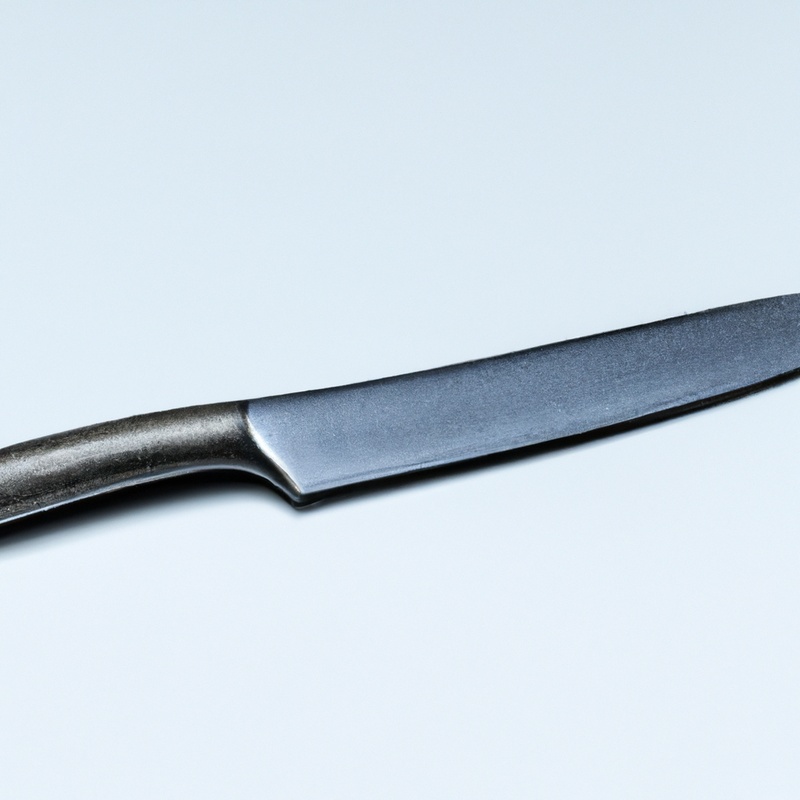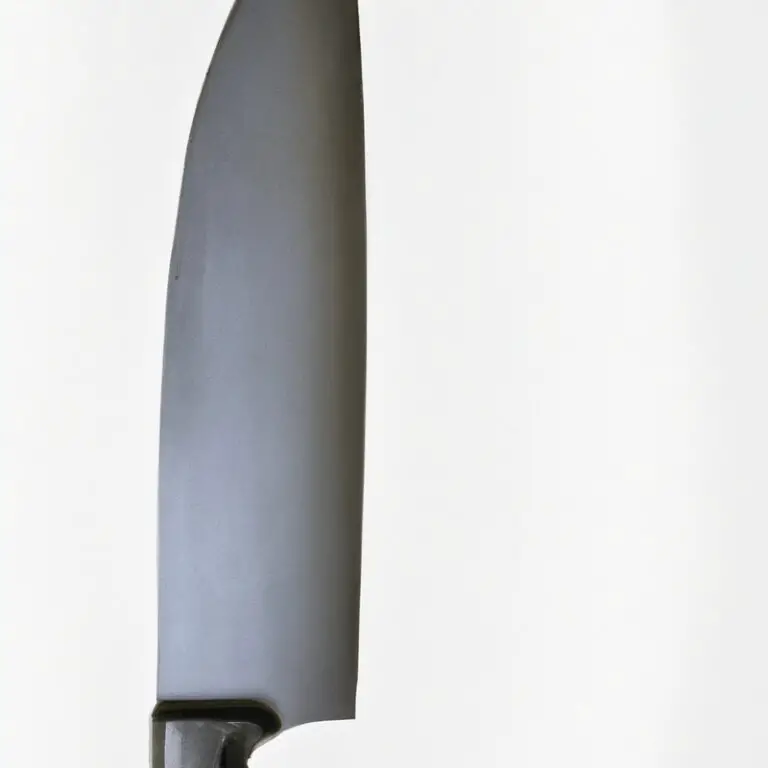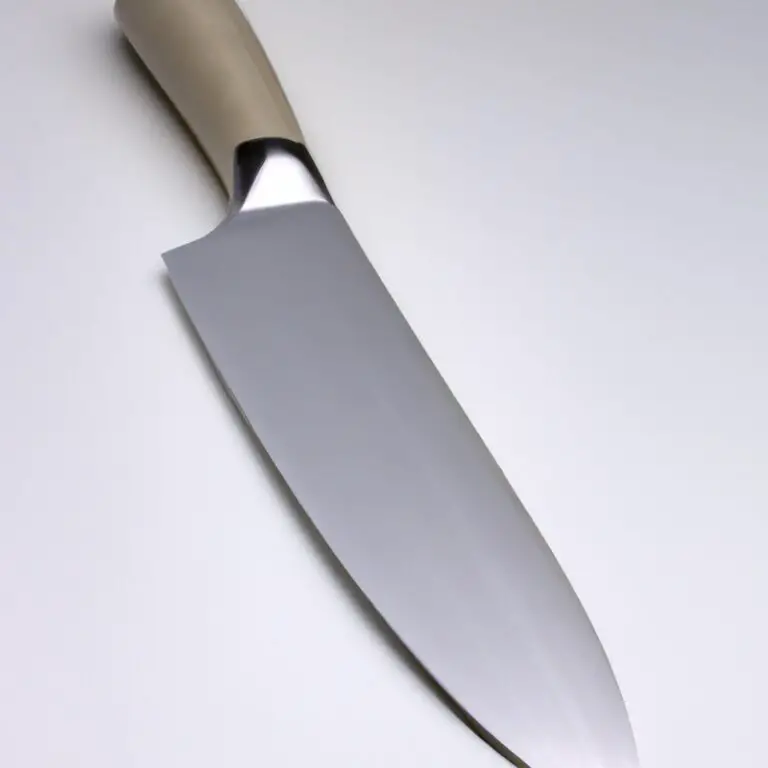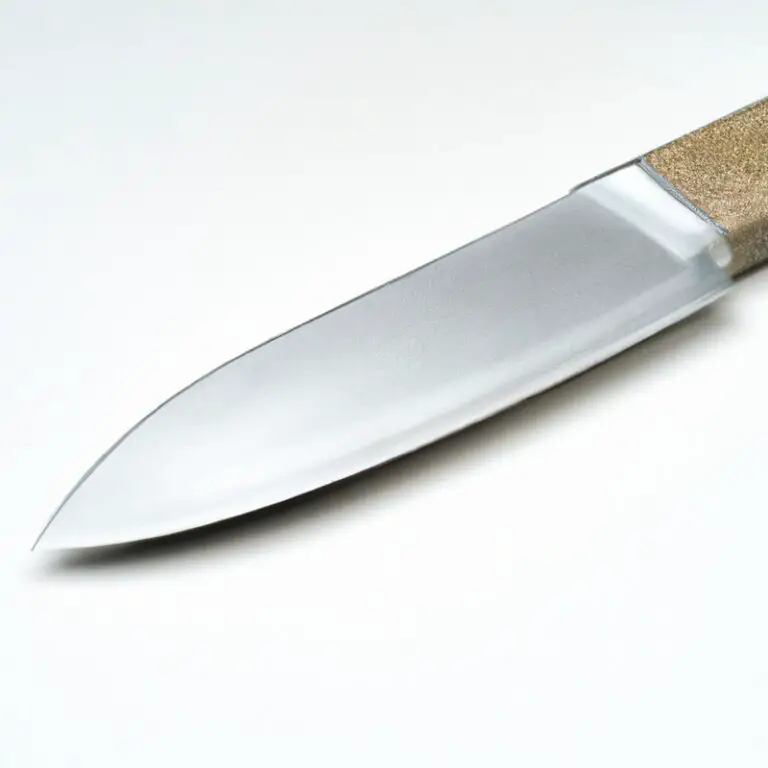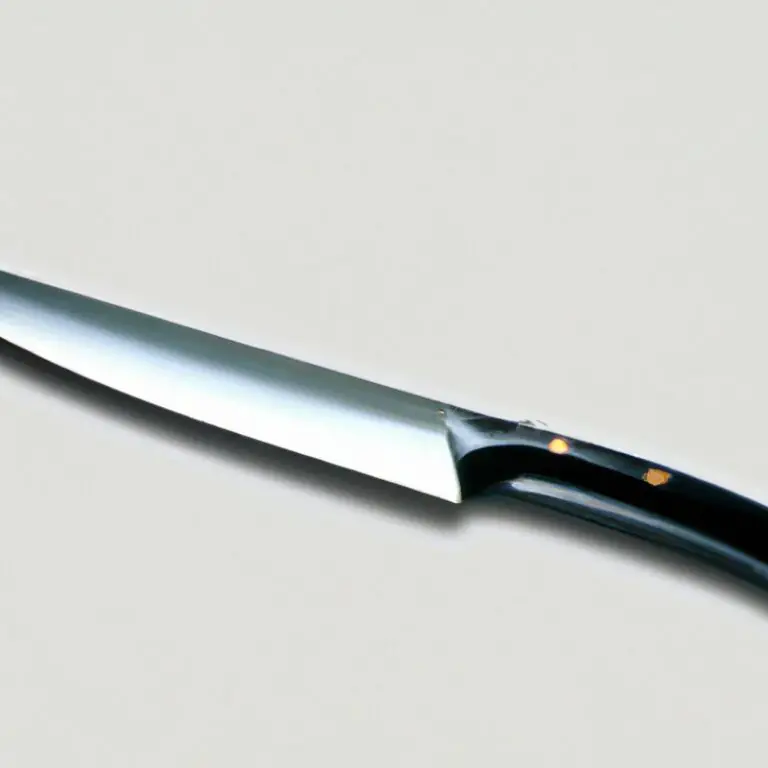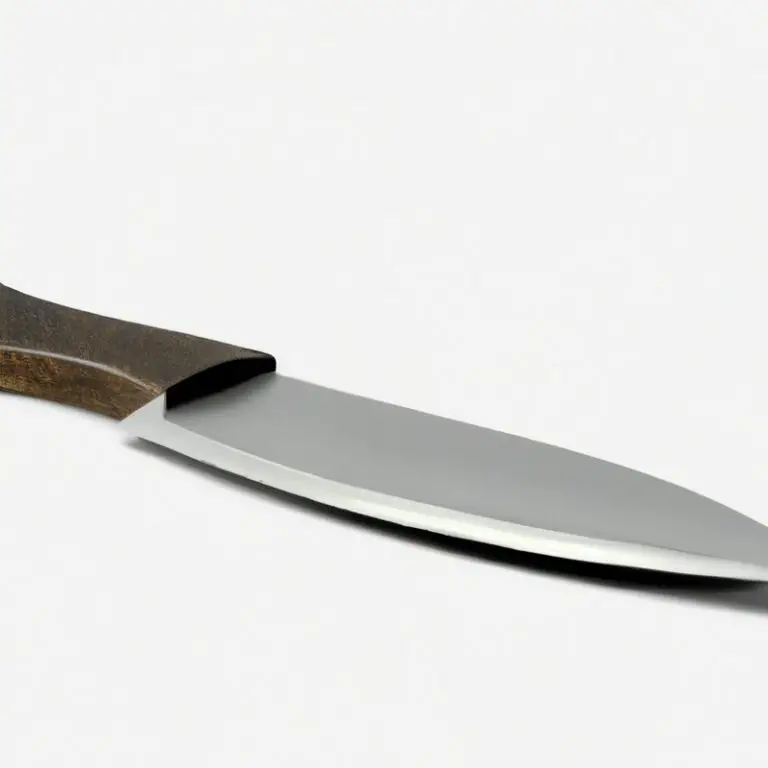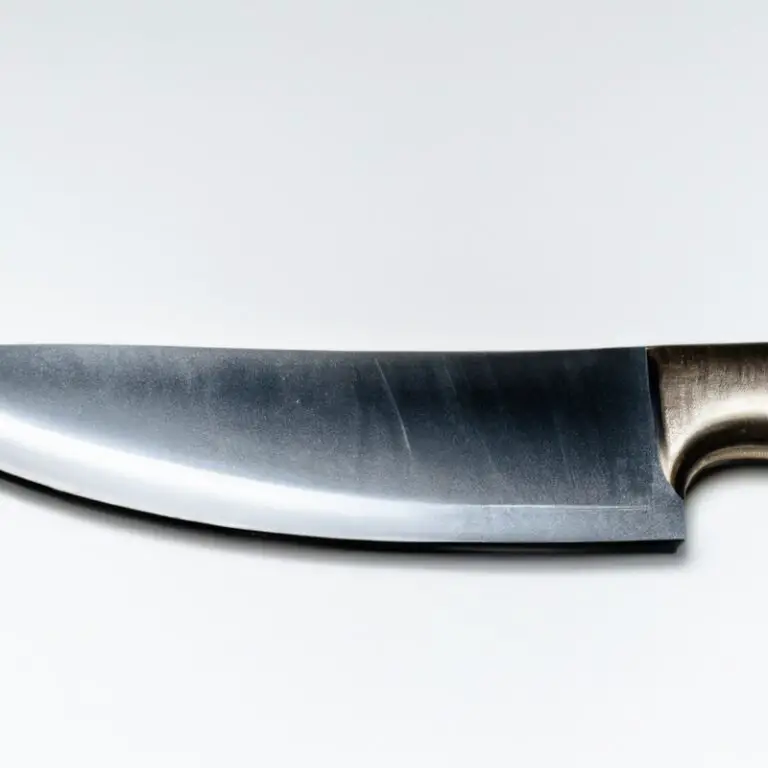What Are Some Common Uses For a Gyuto Knife? Slice Like a Pro!
Key Takeaways:
- A Gyuto knife is a versatile kitchen tool that can handle a variety of tasks, from chopping vegetables to slicing meat.
- Its sharp and narrow blade allows for precision cuts and smooth slicing, making it a favorite among professional chefs.
- Common uses for a Gyuto knife include preparing sushi, filleting fish, and slicing meat into thin cuts for stir-fry or sandwiches.
- When purchasing a Gyuto knife, look for high-quality materials and a comfortable grip to ensure safe and efficient use.
The Japanese Gyuto knife is a multipurpose kitchen tool that has gained tremendous popularity in recent years. With its razor-sharp blade, sturdy construction and ergonomic grip, this versatile knife has become a favorite among both professional chefs and home cooks.
In this article, we will discuss the common uses for a Gyuto knife, along with its various sizes, styles, and components.
Whether you’re slicing and dicing vegetables or preparing a sumptuous steak, we’ll show you how to make the most of your Gyuto knife. So, sharpen your skills and let’s get started!
| Gyuto Knife Uses |
|---|
| Slicing meats, fish, and poultry with ease. |
| Preparing vegetables, which is a common task in any kitchen. |
| Cutting fruits, including pineapple and melon, with precision and minimal effort. |
| Chopping herbs, such as basil and cilantro, quickly and efficiently. |
| Carving roasts, ham, and turkey for holiday meals and special occasions. |
| Sectioning citrus for garnishes and recipes. |
| Slicing breads and soft cakes with minimal pressure and crumbs. |
| Preparing sashimi and sushi, making the Gyuto knife an essential tool for Japanese cuisine. |
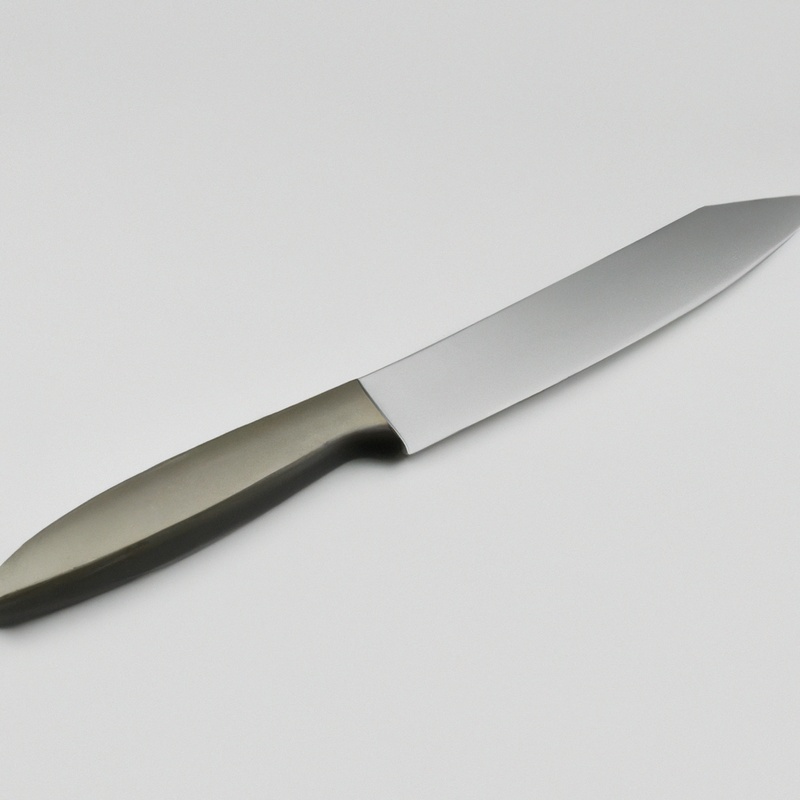
How to Choose the Best Gyuto Knife: A Beginner’s Guide
When it comes to choosing the best gyuto knife for your kitchen, the following factors should be considered:
- Blade Material – Gyuto blades are typically made of high-carbon stainless steel or VG-10 steel. High-carbon stainless steel is durable and less prone to chipping, while VG-10 steel is known for its sharpness and edge retention.
- Blade Length – Gyuto knives come in various blade lengths ranging from 180mm to 270mm. A longer blade is ideal for larger cuts of meat and vegetables, while a shorter blade is more versatile and maneuverable.
- Blade Shape – The shape of the blade can affect the cutting performance of the knife. A gyuto knife with a flatter blade is better for slicing, while a blade with more curvature is better for chopping.
- Handle Material – The handle of a gyuto knife can be made of wood, plastic, or metal. Choose a handle that is comfortable and provides a good grip.
- Price – Gyuto knives can range in price from under $50 to over $500. Consider your budget and choose a knife that balances quality and affordability.
Overall, when choosing a gyuto knife, it’s important to consider factors such as blade material, length, shape, handle material, and price. By keeping these factors in mind, you can select the best gyuto knife for your specific needs.
The Anatomy of a Gyuto Knife and Its Components Explained
Gyuto knives are a popular type of Japanese kitchen knife that is commonly used for slicing, dicing, and chopping a wide range of ingredients. The anatomy of a gyuto knife consists of several parts, including the blade, handle, bolster, tang, and spine.
The blade of a gyuto knife is typically made from high-quality steel and is designed to be thin, sharp, and durable.
The length of the blade can range from around six inches to twelve inches, depending on the specific model and brand. The handle of a gyuto knife is typically made from a durable material such as wood, composite, or resin.
It is designed to be comfortable and secure in the user’s hand, with a grip that provides good control and stability.
The bolster of a gyuto knife is the thick, heavy part of the blade that sits between the handle and the blade. It is designed to provide a counterbalance to the weight of the blade, as well as to protect the user’s fingers from slipping onto the sharp edge.
The tang of a gyuto knife is the part of the blade that extends into the handle.
A full tang provides better balance and durability, while a partial tang can be less expensive and more lightweight. The spine of a gyuto knife is the top, non-sharp edge of the blade.
It is designed to provide additional weight and stability to the blade, as well as to allow the user to apply pressure to the blade without risking injury.
Understanding the anatomy of a gyuto knife is essential for choosing the right model and for using it effectively in the kitchen. By selecting a high-quality gyuto knife with a well-designed blade, handle, bolster, tang, and spine, you can enjoy precise, effortless cutting and chopping for a wide range of ingredients.
Understanding the Differences Between Gyuto Knives and Other Japanese Knives
Gyuto knives are often compared to other popular Japanese knives such as the Santoku, Nakiri, and Sujihiki. The most significant difference between these knives is their design and purpose.
Gyuto knives have a longer blade that ranges from 7 to 12 inches, making them versatile and suitable for a wide range of tasks.
Santoku knives, on the other hand, have a shorter, wider blade that is perfect for slicing, dicing, and mincing. Nakiri knives are specialized for cutting vegetables with a straight-edge blade and square tip, while Sujihiki knives are used for slicing proteins, especially meat, with their long, slender blade.
Overall, Gyuto knives are ideal for both professional chefs and home cooks who need a superior all-purpose knife.
They can slice, dice, chop, and even perform tasks that require precision and accuracy. However, it’s essential to choose the right knife for the job, so understanding the differences between Gyuto knives and other Japanese knives is crucial.
The Benefits of Owning and Using a Gyuto Knife in Your Kitchen
The Gyuto knife is an excellent tool for any chef, home cook, or culinary enthusiast. It boasts several benefits that make it stand out from other knives in the kitchen.
Here are some of the key advantages of owning and using a Gyuto knife:
- Versatility: The Gyuto knife can handle various tasks, from slicing meats and vegetables to crushing garlic. Its thin and sharp blade ensures precision and accuracy in its cuts, making it ideal for intricate dishes with multiple ingredients.
- Comfort: The handle of a Gyuto knife is typically designed for comfort, which reduces the risk of injuries and hand strain. It allows for extended use without fatigue, making it an excellent tool for those who cook for extended periods.
- Efficiency: The Gyuto knife is sharp and can make quick work of vegetables and meats. It doesn’t require too much force to make cuts, saving time and effort in preparing ingredients.
- Durability: The Gyuto knife is made from high-quality materials that make it sturdy and long-lasting. It can withstand frequent use and sharpening, making it an excellent investment for a kitchen.
- Aesthetics: The Gyuto knife is often considered one of the most beautiful knives you can own. Its sleek design and unique shape make it stand out, adding a touch of elegance to the kitchen.
Overall, owning and using a Gyuto knife can significantly improve a cook’s efficiency, accuracy, and comfort in the kitchen. Its versatility, durability, and aesthetics make it an excellent investment for any kitchen enthusiast.
Techniques for Handling a Gyuto Knife With Precision and Accuracy
To effectively use a Gyuto knife, it’s important to follow proper handling techniques to achieve accuracy and precision. Here are some tips:
- Hold the knife with a firm grip, using your thumb and index finger to guide the blade while your other fingers wrap around the handle.
- Position the tip of the blade on the cutting board, using a rocking motion to slice through the food.
- Always use a smooth, fluid motion when cutting, avoiding any jerky movements.
- Keep your fingers curled in towards your palm and away from the blade to prevent injury.
- Use the full length of the blade for long slicing cuts, while smaller chops can be made using the middle or back section of the blade.
- Keep the blade at a consistent angle while cutting, ensuring even slices every time.
- Practice proper honing and sharpening techniques to maintain a sharp edge, making cutting easier and more precise.
By following these simple techniques, you can handle your Gyuto knife with accuracy and precision, making food preparation easier and more enjoyable.
The Importance of Keeping Your Gyuto Knife Sharp and Maintained
It’s critical to keep your Gyuto knife sharp and maintained. A dull blade can make cutting and chopping increasingly challenging and even dangerous, as it forces you to apply more pressure while cutting, leading to increased accidents.
It’s recommended that you maintain a regular honing and sharpening schedule for your knife to keep it razor-sharp.
Furthermore, you should take excellent care of your knife, or it may quickly lose its edge. Always clean, dry, and store your Gyuto knife correctly to protect it from rust and damage.
Overall, maintaining the sharpness and condition of your Gyuto knife is critical to preventing accidents and ensuring that the knife lasts for an extended period, providing you with hassle-free and efficient food preparation.
Common Foods That Can Be Cut More Effectively Using a Gyuto Knife
Common Foods That Can Be Cut More Effectively Using a Gyuto Knife:
- Vegetables: From carrots and potatoes to tomatoes and cucumbers, a Gyuto knife excels at slicing, dicing, and chopping vegetables with absolute precision and ease.
- Meats: Whether you’re carving a roast or slicing a steak, a Gyuto knife’s sharp and narrow blade allows for effortless precision cuts, resulting in clean and uniform slices.
- Fish: A Gyuto knife’s pointed tip and sharp edge make it ideal for filleting fish and trimming away any unwanted bones or skin.
- Fruits: Fruits such as melons, pineapples, and pomegranates require careful and precise cutting, and a Gyuto knife’s sharp blade and balanced weight make it a top choice for fruit preparation.
- Herbs: Chopping fresh herbs like basil, cilantro, and parsley requires a sharp and precise blade, and a Gyuto knife’s narrow profile and sharp edge make it an ideal tool for this task.
In summary, the Gyuto knife is a versatile kitchen tool that excels at cutting a variety of common foods with precision and ease. Whether you’re a professional chef or a home cook, a Gyuto knife is an excellent addition to your kitchen arsenal.
Professional Chef Tips for Using a Gyuto Knife in Different Cooking Styles
Professional Chef Tips for Using a Gyuto Knife in Different Cooking Styles:
- Use the right technique: For precise cutting, grip the handle firmly, and hold the blade with your fingertips. Use your wrist to apply pressure, not your arm.
- Choose the right Gyuto knife for the job: Choose a longer blade for larger ingredients and a shorter blade for more delicate work. A blade with a thinner edge is better for slicing and dicing, while a thicker blade is ideal for chopping.
- Maintain sharpness: A sharp Gyuto knife makes all the difference in speed and accuracy. Use a honing rod to keep the blade honed between sharpening sessions.
- Use the correct cutting surface: Use a soft, non-abrasive cutting board to minimize damage to the blade. Avoid cutting on hard or metal surfaces.
- Adjust your pressure: For softer ingredients, a light touch is essential. For denser foods, more pressure may be required.
- Keep your blade clean: After use, clean the blade with warm water and soap, and dry it thoroughly. Avoid using abrasive sponges or soaking the blade in water.
- Know when to replace: Even with careful use and maintenance, all knives will eventually need to be replaced. If your Gyuto knife starts to feel dull or handles poorly, it may be time to invest in a new one.
The Ideal Gyuto Knife Size and Style for Your Specific Cooking Needs
When choosing the ideal Gyuto knife size and style, it’s essential to consider your specific cooking needs. A 210mm (8.2 inches) or 240mm (9.4 inches) Gyuto knife is most recommended if you’re a beginner or intermediate chef.
This is because they offer a balance between maneuverability and cutting length, making them suitable for most tasks in the kitchen.
If you frequently cut through larger items, a longer Gyuto knife of 270mm (10.6 inches) or more would be appropriate. However, if you tend to use your knife for delicate tasks and intricate cuts, a shorter 180mm (7 inches) or 210mm (8.2 inches) blade would be more suitable.
Regarding blade style, Gyuto knives typically come in either a double-bevel or single-bevel edge.
A double-bevel is suitable for both left and right-handed users, making it more versatile. It’s also easier to sharpen compared to a single-bevel blade.
Ultimately, the ideal Gyuto knife size and style depend on your specific needs and preferences in the kitchen.
A reliable method is to test out different sizes and styles to determine the most comfortable and efficient fit for you.
Upgrade Your Cutting Game: Gyuto Knife vs. Western Chef’s Knife
When it comes to choosing between a Gyuto knife and a Western chef’s knife, it’s important to consider the type of foods you’ll be cutting and your personal preferences. Gyuto knives are lighter, sharper, and more agile, making them better suited for precision cuts and handling delicate ingredients.
On the other hand, Western chef’s knives are sturdier and have a wider blade, making them ideal for larger cuts and tougher ingredients.
Ultimately, it comes down to personal preference and the specific tasks you need the knife for.
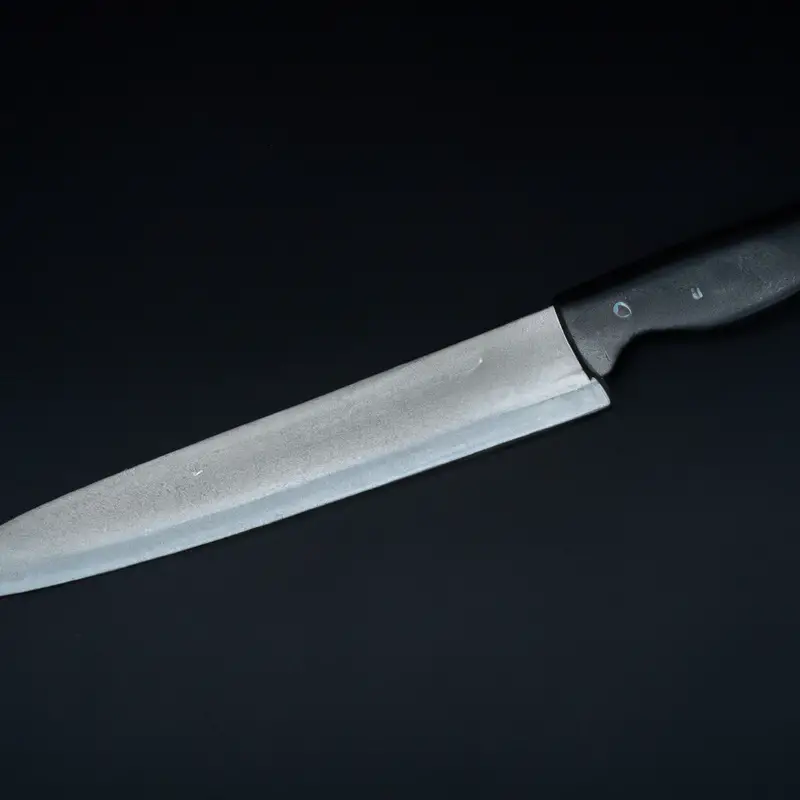
Final Verdict
The Gyuto knife is a versatile and essential kitchen tool that offers a wide range of uses beyond just slicing meat and fish. It can be used to chop vegetables, create precise cuts for sushi and sashimi, and even tackle tougher ingredients like chicken and herbs.
By incorporating proper techniques for handling, sharpening, and maintaining your Gyuto knife, you can elevate your cutting game to the next level and achieve unparalleled precision and control in your cooking.
Whether you’re a professional chef or a home cook, investing in a high-quality Gyuto knife is a worthwhile investment that will last you for many years to come. So why not upgrade your kitchen experience today and join the many satisfied users who have discovered the benefits of owning a Gyuto knife.

